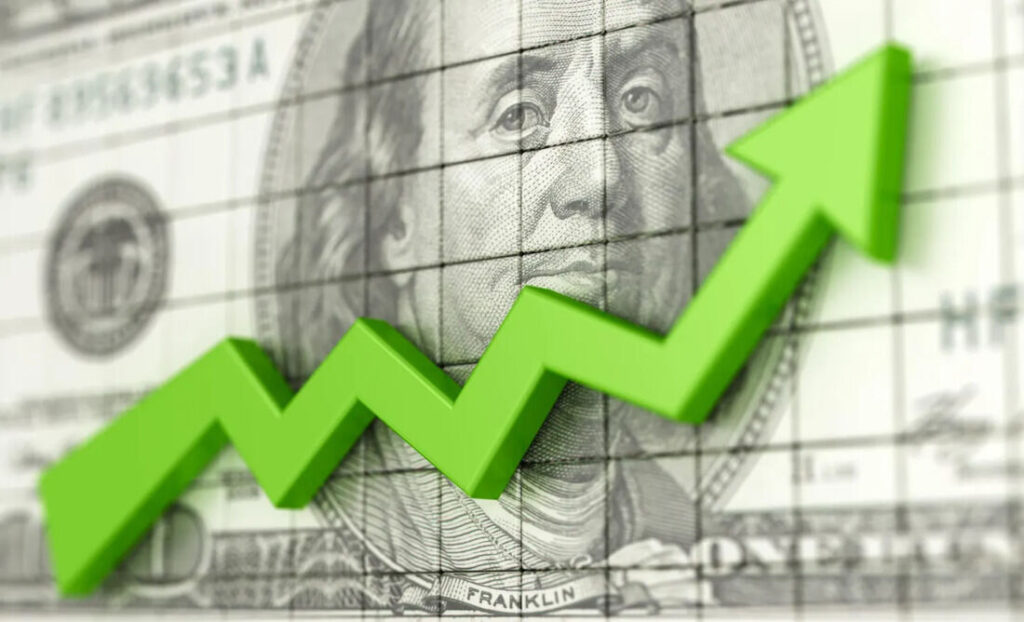Stock dividends are one of the key concepts in investing that both new and experienced investors should understand. They represent a portion of a company’s profits that are shared with its shareholders.
Understanding how dividends work, why companies pay them, how they can be a source of income for investors, and how to choose dividend-paying stocks can greatly enhance an investor’s ability to build wealth and income over time.
In this guide, we will explore what stock dividends are, the different types of dividends, why companies pay dividends, the benefits and risks of dividend investing, how to select dividend stocks, and much more. By the end of this article, you will have a solid understanding of dividends and how they fit into your investment strategy.
Table of Contents
What Are Stock Dividends?

A dividend is a payment made by a corporation to its shareholders, typically as a reward for investing in the company. Dividends are usually paid in cash, but they can also be issued in the form of additional shares, a practice known as a stock dividend. These payments come from a company’s earnings, and they are typically made to shareholders on a regular basis—such as quarterly, semi-annually, or annually.
For example, if you own 100 shares of a company that declares a $1 dividend per share, you will receive a total of $100 as a dividend payment. The amount paid out to shareholders depends on the number of shares they own and the dividend declared by the company.
Dividends are important because they provide shareholders with an income stream in addition to the potential capital gains they might receive from an increase in the stock price. They can also act as an indicator of a company’s profitability and financial health.
Types of Stock Dividends:
There are two main types of stock dividends:
- Cash Dividends
- Stock Dividends
Let’s take a closer look at each of these dividend types.
Cash Dividends:
Cash dividends are the most common type of dividend. When a company announces a cash dividend, shareholders receive a specified amount of money for each share they own. This money is typically paid directly into the shareholder’s brokerage account, bank account, or by check.
For example, if a company declares a dividend of $2 per share, and you own 500 shares, you will receive $1,000 in cash (500 shares x $2 per share). Cash dividends provide a tangible income that investors can use as they see fit—whether that’s reinvesting it back into the stock market, saving it, or spending it.
Cash dividends are typically paid on a regular basis. Most companies pay them quarterly (every three months), though some may pay annually or even monthly. The dividend payment is usually paid after the company announces its earnings report and confirms its dividend policy for that period.
Stock Dividends:
Stock dividends are slightly different from cash dividends. Rather than paying cash to shareholders, the company issues additional shares of its stock. If you own shares in a company that announces a stock dividend, you will receive extra shares in proportion to the number of shares you already own.
For instance, if a company offers a 10% stock dividend, you would receive 10 additional shares for every 100 shares you already own. If you had 100 shares, you would now have 110 shares in total. While stock dividends don’t provide immediate cash income, they can increase the number of shares you own, which could lead to greater future returns if the stock appreciates in value over time.
Stock dividends are more commonly seen in companies that are in growth stages or are looking to reinvest their profits back into their business instead of paying out cash. For companies that don’t have a lot of available cash but still want to reward shareholders, issuing stock dividends can be a good option.
Why Do Companies Pay Dividends?
Companies pay dividends for several reasons, all of which are geared toward providing value to their shareholders. Here are the main reasons why companies decide to issue dividends:
1. To Attract and Retain Investors
Dividends can help attract investors who are looking for a reliable income stream from their investments. Many investors, especially retirees, rely on dividend income as a way to supplement their regular income. By paying a consistent dividend, a company can appeal to these types of investors.
Furthermore, paying dividends helps retain existing investors who value the income generated from holding the company’s stock. Investors who see dividends as a sign of a company’s stability may be more likely to keep their shares in the company for the long term.
2. To Share Profits with Shareholders
One of the primary reasons for paying dividends is to distribute profits among shareholders. When a company is profitable, shareholders have an opportunity to share in that success. Companies may feel that paying dividends is a way to reward those who have invested in the business and helped it grow.
By distributing a portion of their profits as dividends, companies can build goodwill with investors and enhance their reputation in the market.
3. To Signal Financial Health
Companies that consistently pay dividends are often seen as financially healthy and stable. A company that is able to generate enough profits to not only cover operating expenses but also pay dividends is often viewed as financially strong. Dividend payments can act as a signal to the market that a company is doing well and is capable of generating sustainable earnings.
Additionally, when a company increases its dividend payments over time, it can signal to investors that the business is growing and becoming more profitable.
4. To Use Surplus Cash Effectively
When companies generate a lot of cash and don’t have immediate plans for reinvestment or expansion, paying dividends can be a way to put that excess cash to good use. By returning capital to shareholders, companies can prevent themselves from accumulating unnecessary cash reserves, which may otherwise go underutilized.
Also Read: Make1m.Com Millionaire Life – Unlock Your Path To Wealth!
The Benefits of Dividend Investing:
Dividend investing has become a popular strategy for many investors. By focusing on stocks that pay dividends, investors can benefit in several ways:
1. Steady Income Stream
One of the main benefits of dividend investing is the steady income stream it provides. Shareholders who receive regular dividend payments can use that income to cover their living expenses, reinvest into more shares, or simply enjoy the cash flow. This makes dividend-paying stocks an attractive option for investors seeking stable income, such as retirees.
2. Compounding Returns
Another powerful benefit of dividend investing is the ability to reinvest dividends and take advantage of compounding. When dividends are reinvested, the investor purchases additional shares of stock, which in turn generates more dividends. Over time, this compounding effect can lead to significant growth in the value of the investment.
3. Reduced Volatility
Dividend-paying stocks are often less volatile than non-dividend-paying stocks. This is because companies that pay dividends tend to be more established, with stable earnings and a proven business model. This can help cushion against large market swings and provide investors with a more predictable investment experience.
4. Inflation Hedge
Dividend-paying stocks can also help hedge against inflation. While inflation erodes the purchasing power of money over time, the income generated by dividends can help offset this loss. If a company raises its dividend payments over time, it can help keep up with rising prices.
The Risks of Dividend Investing:

While dividend investing has many benefits, it’s not without risks. Here are some potential downsides to be aware of:
1. Dividend Cuts or Suspensions
One of the main risks associated with dividend investing is the possibility that a company might reduce or eliminate its dividend payments. If a company faces financial trouble or a downturn in its industry, it may decide to cut its dividend to conserve cash. This can negatively impact investors who rely on those dividends for income.
2. Dividend Traps
A dividend trap occurs when a stock offers a high dividend yield, but the company’s financial situation suggests that the dividend is unsustainable. Sometimes companies offer high dividends to attract investors, even though they might not be able to maintain those payments in the long term. Investors should be cautious about investing in high-yield stocks without understanding the company’s financial health.
3. Tax Implications
Dividends are taxable income, and investors may have to pay taxes on the dividend payments they receive. In some cases, dividends are taxed at a higher rate than long-term capital gains, which can reduce the overall returns for investors.
4. Missed Growth Opportunities
Some investors prefer to reinvest profits into growing the business rather than paying them out as dividends. While dividend-paying stocks can offer steady returns, they may not provide the same growth potential as companies that reinvest their profits into expanding their operations. Dividend investors may miss out on the chance to invest in higher-growth companies that don’t pay dividends.
How to Choose Dividend Stocks?
When selecting dividend stocks, investors should consider several factors to ensure they are making smart investment choices:
1. Dividend Yield
The dividend yield is the annual dividend payment divided by the stock price. A higher yield can be attractive, but it’s important to assess whether the yield is sustainable. Extremely high yields can sometimes indicate that the stock price has dropped significantly, which could signal underlying problems in the company.
2. Dividend History
A strong history of consistent or growing dividends is a good sign of a company’s commitment to rewarding shareholders. Look for companies that have a track record of paying reliable dividends over the long term.
3. Financial Health
Investors should also assess the financial health of a company before buying its stock. Companies that are financially stable, with strong cash flow and low debt, are more likely to continue paying dividends in the future.
4. Payout Ratio
The payout ratio is the percentage of a company’s earnings that is paid out as dividends. A very high payout ratio can indicate that the company is paying out most of its earnings and may not have enough left to reinvest in the business. A lower payout ratio, on the other hand, suggests that the company has room to grow its dividend in the future.
Conclusion:
Stock dividends are an important aspect of investing that provide investors with a way to earn income from their investments. By understanding the different types of dividends, the reasons companies pay dividends, and the potential benefits and risks of dividend investing, you can make informed decisions about your investment strategy.
Whether you’re looking for steady income or seeking long-term growth, dividends can be a valuable tool in building a well-rounded and diversified investment portfolio. As with any investment, it’s essential to do thorough research and understand the financial health of the companies you invest in to maximize your chances of success.





